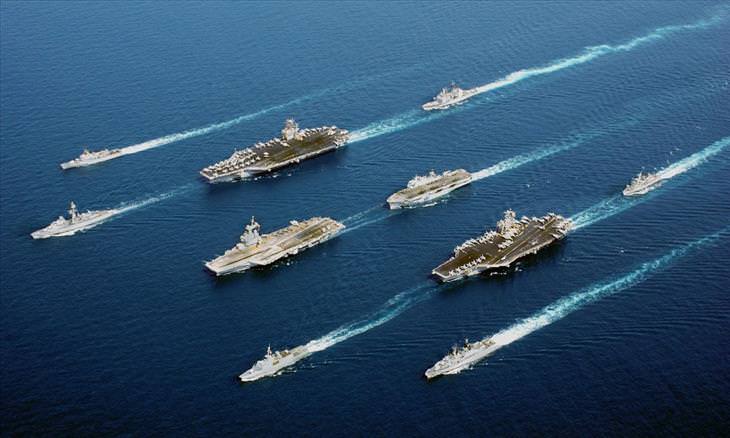
The Age of the Fixed-Wing Airplane
The first fixed-wing airplane became a reality in 1903. And it took only eight years for the French Navy to construct a seaplane carrier, though planes would not launch from the surface of the ship itself and instead were lowered to the water and allowed to take off. On January 18th, 1911, Eugene Ely became the first person to land and take off from a stationary ship. In 1918, the British Navy converted the HMS Argus into the first flat-topped aircraft carrier.
Post WWI
By the mid-1920s, several navies around the world commissioned the construction of flat-deck aircraft carriers. These ships were usually created using existing ships that were modified to fulfill their new roles. During the Second World War, these ships became the backbone of the U.S., British, and Japanese navies, and they played a significant role in battle.
WWII
Towards the end of WWII, the emergence of jet-powered airplanes prompted significant changes to the design of the aircraft carrier, introducing an angled landing strip (9° off of the carrier’s main axis), allowing for safer landings – if a pilot were to land too fast and miss the arrestor cables (which were used to slow landing planes), they just needed to increase speed and take off once more without risking the rest of the ship. Another improvement was the introduction of the steam-powered catapults, which are still used in modern carriers to launch planes at high velocity.
1950s – Present
The 1950s and 60s ushered in the nuclear age. Nuclear reactors were installed in the new USS Enterprise aircraft carrier, allowing it to operate for significantly longer periods, while helicopter carriers were built as smaller support carriers, thanks to the lack of need for a landing strip. During this time, the British Navy came up with an ingenious way to construct smaller carriers by incorporating ramps, thus shortening the distance needed to launch the airplanes.
 Above: The USS John C. Stennis, USS John F. Kennedy, Charles de Gaulle (the French flagship carrier), and the British helicopter carrier, HMS Ocean, with numerous escort vessels.
Above: The USS John C. Stennis, USS John F. Kennedy, Charles de Gaulle (the French flagship carrier), and the British helicopter carrier, HMS Ocean, with numerous escort vessels.